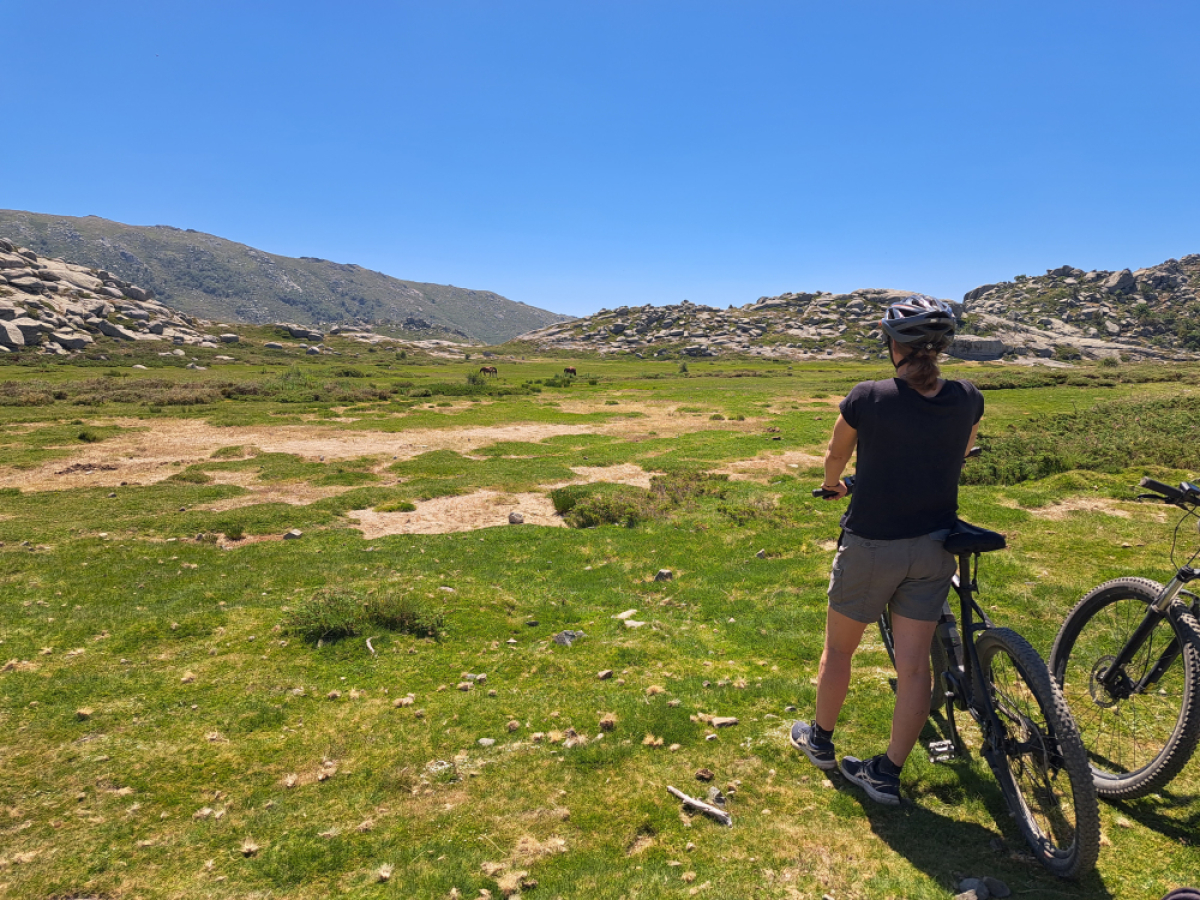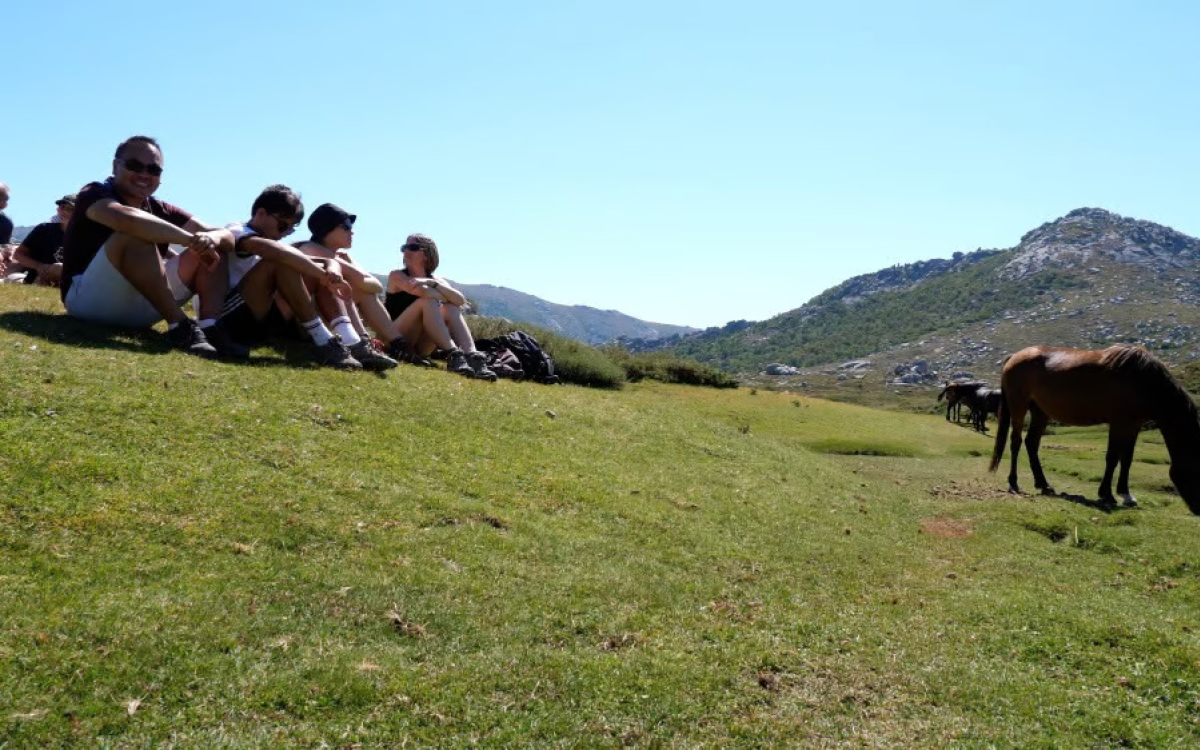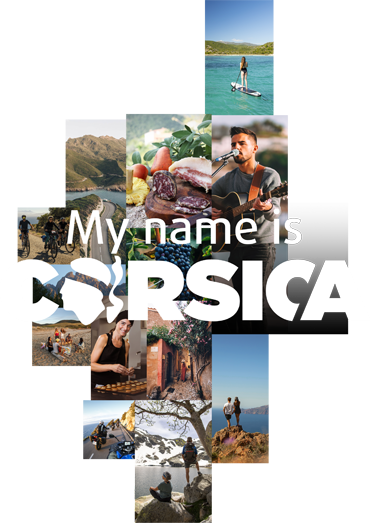Rechercher...
Explore Corsica
The Cuscionu plateau on an electrically assisted bike

Panniers fixed to luggage racks and helmets screwed onto heads. Whatever the weather, every day, like hikers on high mountain trails, cyclotourists ply the asphalt roads of Corsica. They pedal along the GT20, the main signposted route across the island, or take improvised itineraries, swallowing up the miles as they discover the region. On a bike, much more than in a car or on a motorbike, the connection with the environment is remarkable and instant, even when approaching the main access roads. The scents of the maquis come to the fore, the essences release their fragrances and adapt to the weather. The scents change from the damp atmosphere of a rainy sky to the arid earth, dried out by the scorching sun.
 ©CORSE MATIN
©CORSE MATIN
From the seaside to the coastal villages, and sometimes by inland roads, these two-wheeled visitors rarely stray off the beaten track. Either because they are often far too well trodden, with crevices and stones strewn all over them, or because they don't know the area well enough. But initiatives are springing up to offer everyone the chance to discover some of the must-see sites, the jewels of the Corsican mountains normally accessible only to the most skilful hikers. The Cuscionu plateau, a Natura 2000 site covering more than 11,000 hectares spread over six communes, is one of those precious treasures. Criss-crossed by the famous GR20, the plateau has been opening its trails to mountain bikers and less committed hikers for several years now, allowing them to quench their thirst for discovering what lies hidden in these famous massifs.
Riding electric mounts along the few kilometres of track between the Matalza gîte and the Bucchinera structure, even the less athletic can enjoy an adventure in the heart of a remarkable and unique natural site. During the summer months, these high grassy plateaux are home to herds of cattle that have moved to the summer pastures and are free to roam to the most enticing areas. Pigs rub shoulders with a few cows and many horses are left to roam freely. It's not unusual for them to be joined by their young - calves, foals and piglets - at the start of their lives in the best possible way, in the fresh air of the generous pastures crossed by abundant streams.
Without leaving the track, walkers can enjoy the plateau while keeping their distance from the paths that offer a glimpse of the most wonderful things to be found here. There's no need to be an over-trained sportsman as the hills can almost be climbed on their own, thanks to the electric assistance allowing families to set off on an adventure.
Like the adventurers of the GR20, cyclists can enjoy a lunch in a sheepfold, where farm produce, often made in-house, is on offer.
Without having to pedal the bumpy roads, hiring a bike for the day also allows you to explore the villages of Taravo from Zicavo, one of the most elevated, and perhaps rub shoulders with the touring cyclists on the GT20 on the 11th stage of their journey.
 ©CORSE MATIN
©CORSE MATIN
Lunch in a sheepfold
On the Cuscionu plateau, ancient sheepfolds have been transformed to welcome visitors for lunch. These mountain restaurants are not only popular with hikers, but with all kinds of people.
The meats, cheeses and charcuterie are often locally produced and processed on site, a guarantee of quality that is not to be underestimated.
You can also spend the night here, with different types of accommodation on offer, from tents to small private chalets.
 ©ATC
©ATC
White-water swimming
There's no shortage of places to swim on the Cuscionu plateau or in the streams lining the Taravo villages. After a bike ride, there's no better way to cool off than a dip in the white water. On the outskirts of Zicavo, in the direction of Quenza, there's a beautiful waterfall with a number of pools ideal for a summer dip.
 ©ABCROBERTO
©ABCROBERTO
Guided walks
Another way to discover the Cuscionu plateau is on foot. A number of mid-mountain guides offer discovery itineraries, sometimes off the beaten track but respecting the biodiversity of the site. Accessible and adaptable to all ages, these guided routes are perfect for those who are afraid to venture out on their own. What's more, the guides are also on hand to describe the landscapes and provide information about the fauna, flora and history.
 ©CORSE MATIN
©CORSE MATIN
Locate
powered by cd-media.fr



